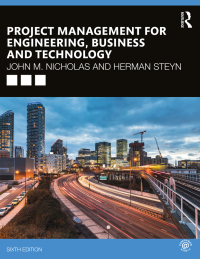In what ways should high-tech projects be managed differently from low-tech ones? When the Denver Airport project
Question:
In what ways should high-tech projects be managed differently from low-tech ones?
When the Denver Airport project was initiated in 1989, the planned 4-year timeframe seemed adequate.
However, despite abundant political backing and adequate funding, the project suffered a 16-month delay and a $1.5 billion cost overrun. The NTCP model can be used in retrospect to explain the root cause of much of the project’s unsatisfactory performance. With 20–20 hindsight, one may argue that a relatively simple NTCP analysis of the project and its subprojects at an early stage (and adjustment of management style accordingly) might have improved project performance.
To enable aircraft turnaround around in less than 30 minutes as requested by United Airlines, one of the airport’s largest tenants, an automated baggage sorting and handling system was selected over the traditional manual handling system. In December 1991, BAE Automatic Systems was contracted to design and implement the system in an estimated 2.5-year timeframe.
By August 1994, the system, already 11 months late, was still not functioning properly and was severely hampering airport operations. Management decided as a backup to build an alternative, more traditional baggage system at an additional $50 million cost, and only United would use the BAE system at its own terminal concourse. In January 1995, a full-scale practice run of the BAE system was executed successfully, and in February 1995, the airport was opened—16 months late.
Step by Step Answer:

Project Management For Engineering Business And Technology
ISBN: 9780367277345,9781000092561
6th Edition
Authors: John M. Nicholas , Herman Steyn





